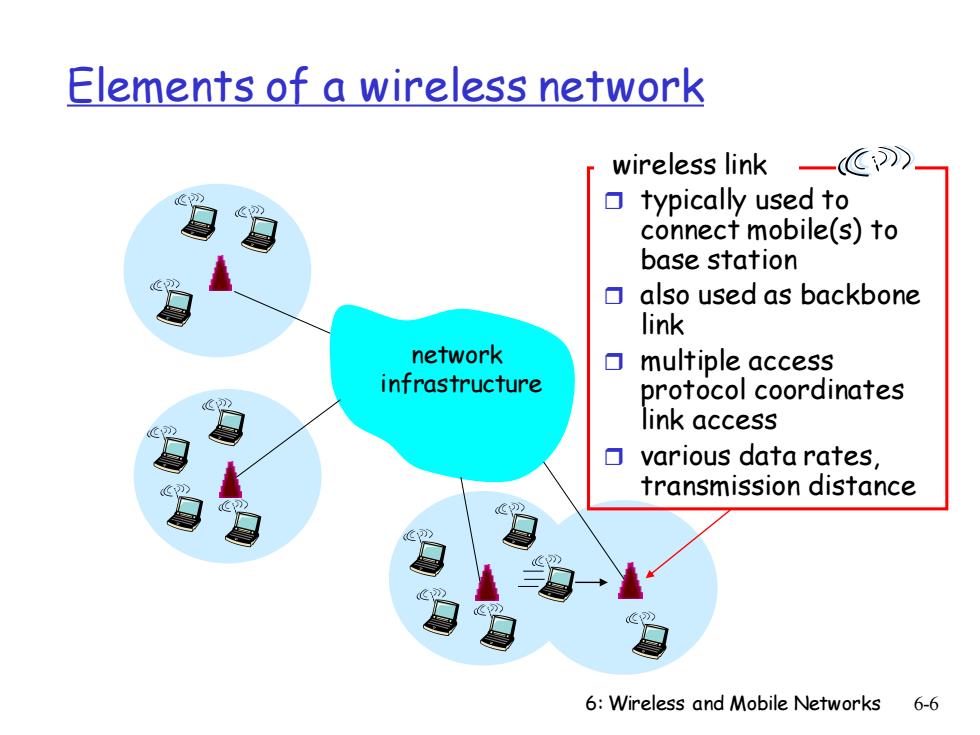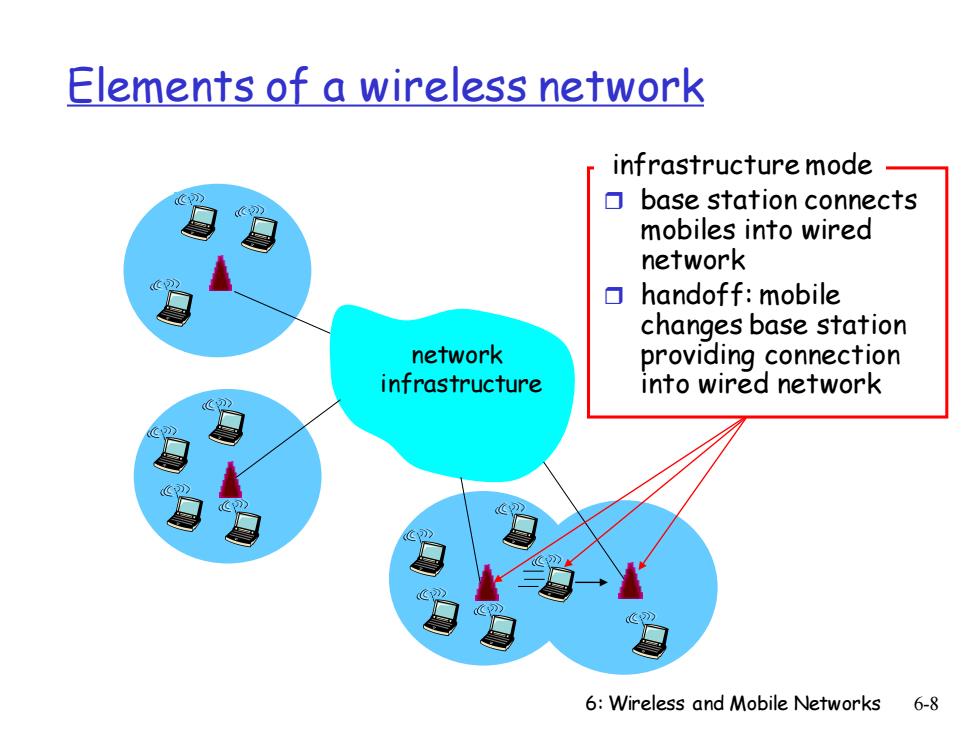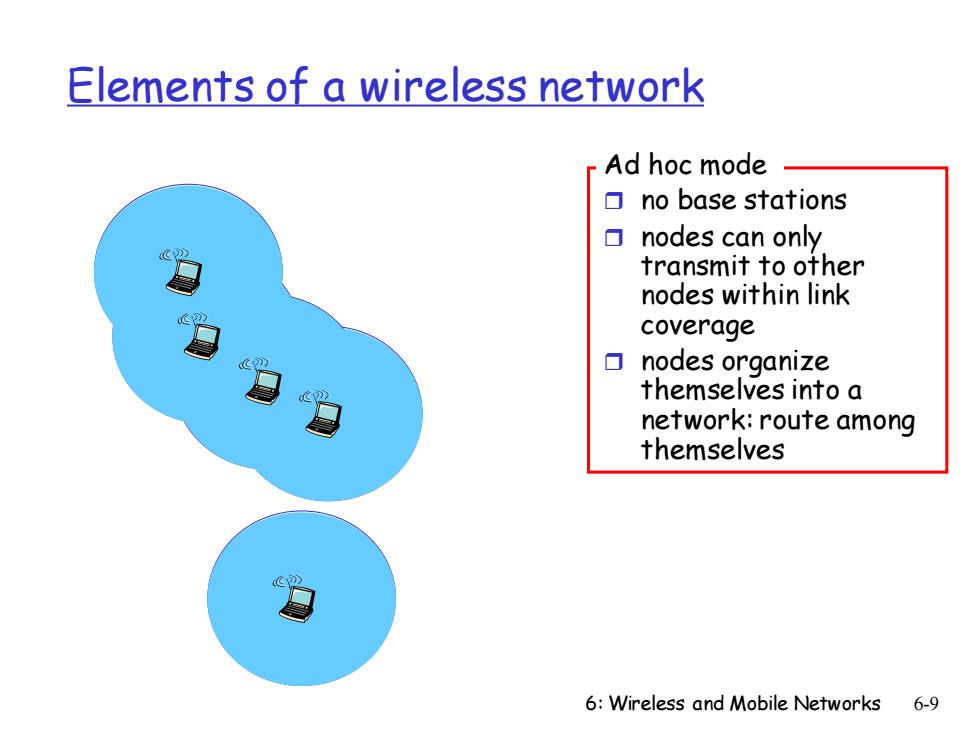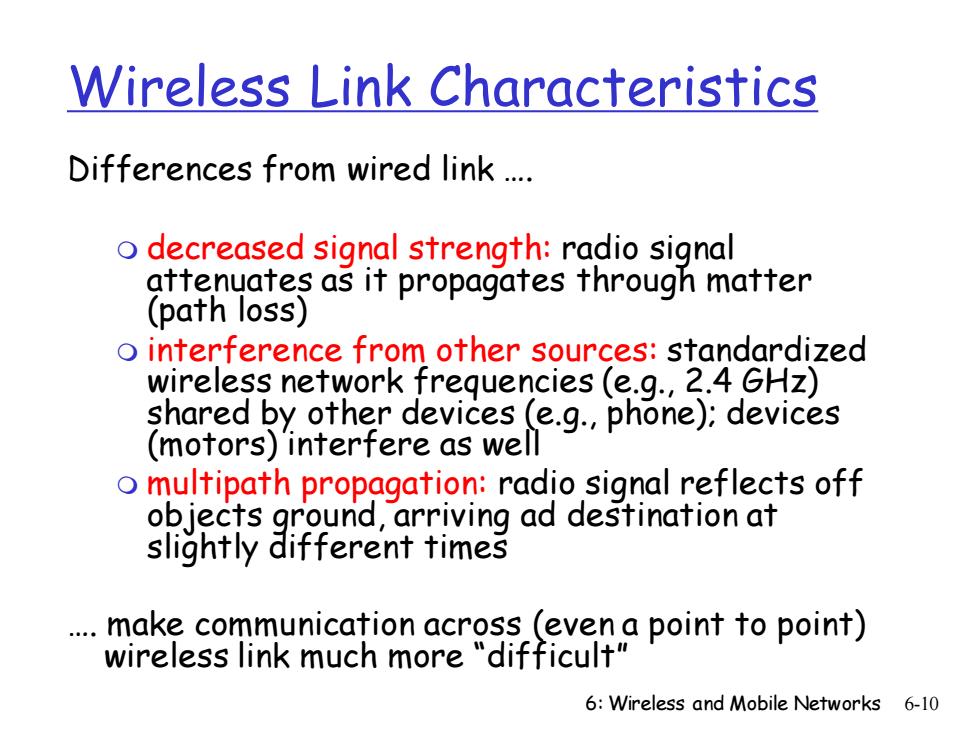
Elements of a wireless network wireless link 一》 ▣typically used to connect mobile(s)to base station ▣also used as backbone link network multiple access infrastructure protocol coordinates link access various data rates, transmission distance 3- 6:Wireless and Mobile Networks 6-6
6: Wireless and Mobile Networks 6-6 Elements of a wireless network network infrastructure wireless link typically used to connect mobile(s) to base station also used as backbone link multiple access protocol coordinates link access various data rates, transmission distance

Characteristics of selected wireless link standards 54 Mbps 802.11{a,g} 5-11 Mbps 802.11b .11 p-to-p link 1Mbps 802.15 -3G 384 Kbps UMTS/WCDMA,CDMA2000 IS-95 CDMA,GSM -2G 56 Kbps Indoor Outdoor Mid range Long range outdoor outdoor 10-30m 50-200m 200m-4Km 5Km-20Km 6:Wireless and Mobile Networks 6-7
6: Wireless and Mobile Networks 6-7 Characteristics of selected wireless link standards 384 Kbps 56 Kbps 54 Mbps 5-11 Mbps 1 Mbps 802.15 802.11b 802.11{a,g} IS-95 CDMA, GSM UMTS/WCDMA, CDMA2000 .11 p-to-p link 2G 3G Indoor 10 – 30m Outdoor 50 – 200m Mid range outdoor 200m – 4Km Long range outdoor 5Km – 20Km

Elements of a wireless network infrastructure mode base station connects mobiles into wired network ▣ handoff:mobile changes base station network providing connection infrastructure into wired network 6:Wireless and Mobile Networks 6-8
6: Wireless and Mobile Networks 6-8 Elements of a wireless network network infrastructure infrastructure mode base station connects mobiles into wired network handoff: mobile changes base station providing connection into wired network

Elements of a wireless network Ad hoc mode ▣no base stations ▣nodes can only transmit to other nodes within link coverage □nodes organize themselves into a network:route among themselves 6:Wireless and Mobile Networks 6-9
6: Wireless and Mobile Networks 6-9 Elements of a wireless network Ad hoc mode no base stations nodes can only transmit to other nodes within link coverage nodes organize themselves into a network: route among themselves

Wireless Link Characteristics Differences from wired link . o decreased signal strength:radio signal attenuates as it propagates through matter (path loss) o interference from other sources:standardized wireless network frequencies(e.g.,2.4 GHz) shared by other devices (e.g.,phone):devices (motors)interfere as well o multipath propagation:radio signal reflects off objects ground,arriving ad destination at slightly different times .make communication across (even a point to point) wireless link much more "difficult" 6:Wireless and Mobile Networks 6-10
6: Wireless and Mobile Networks 6-10 Wireless Link Characteristics Differences from wired link . decreased signal strength: radio signal attenuates as it propagates through matter (path loss) interference from other sources: standardized wireless network frequencies (e.g., 2.4 GHz) shared by other devices (e.g., phone); devices (motors) interfere as well multipath propagation: radio signal reflects off objects ground, arriving ad destination at slightly different times . make communication across (even a point to point) wireless link much more “difficult